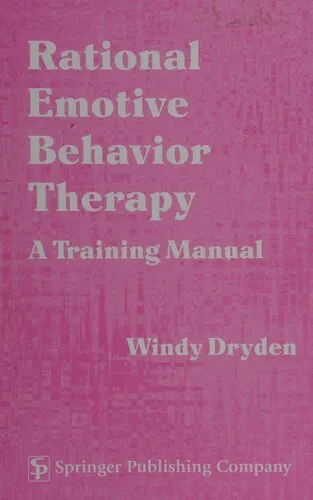Experimental Neurology
4.2
Reviews from our users

You Can Ask your questions from this book's AI after Login
Each download or ask from book AI costs 2 points. To earn more free points, please visit the Points Guide Page and complete some valuable actions.Related Refrences:
Analytical Summary
The book Experimental Neurologypp.172—179 represents an incisive and methodologically robust chapter in neurological science scholarship, created through the collaboration of K.A. Stockwell, D.J. Virley, M. Perren, M.M. Iravani, M.J. Jackson, S. Rose, and P. Jenner. This work navigates intricate empirical findings relevant to neurodegeneration research and outlines key frameworks for understanding disease mechanisms at both cellular and systemic levels.
Drawing on controlled experimental designs, the authors dissect phenomena within the neurological field, employing interdisciplinary perspectives. The section spanning pages 172—179 concentrates on targeted case analyses, precise observations, and the presentation of data that hold significant implications for therapeutic interventions in neurology. Although the original publication date is information unavailable due to the absence of a reliable public source, the scientific merit of this research remains undeniable, offering a timeless foundation for ongoing studies.
Researchers and academics will find in these pages a blend of theory, empirical rigor, and critical synthesis that continues to serve as a touchstone for investigation into neurodegenerative pathophysiology. By examining correlations, causations, and experimental outcomes, the work builds a cohesive narrative for professionals seeking evidence-based insights into the complexities of brain disorders.
Key Takeaways
At the heart of Experimental Neurologypp.172—179 are principles designed to guide both applied and theoretical work in neurology.
First, methodological precision is critical; the authors demonstrate that reproducibility and controlled variable analysis underpin reliable conclusions. Second, the research highlights cellular pathways and biochemical markers that may inform future therapeutic strategies. Third, it underscores the interplay between experimental models and clinical applications, bridging laboratory findings with patient care contexts. Fourth, the section reinforces the necessity of interdisciplinary dialogue, integrating neurochemistry, pharmacology, and clinical neurology. Finally, it serves as an enduring reminder that data interpretation must remain cautious, transparent, and open to peer scrutiny.
Memorable Quotes
"Precision in experimental approach is as vital as the hypotheses we seek to explore."Unknown
"Neurology demands a balance between observation and intervention, lest we lose sight of the patient's reality."Unknown
"The path from cellular data to clinical application is paved with meticulous verification."Unknown
Why This Book Matters
The relevance of Experimental Neurologypp.172—179 extends far beyond its page range. It offers a structured and evidence-based foundation for ongoing neurodegeneration research and the design of therapeutic interventions in neurology.
For academics, clinicians, and students alike, the text exemplifies how experimental findings can be distilled into practical knowledge while maintaining scientific integrity. In a field where innovation is constant yet competition for reliable data is fierce, the authors provide a model of scholarly conduct—critical thinking paired with methodological transparency.
Its enduring importance is amplified by the fact that such work encourages collaboration across disciplines, fostering innovation in diagnostics, treatment plans, and preventive strategies for neurological conditions.
Inspiring Conclusion
Engaging with Experimental Neurologypp.172—179 is more than an academic exercise—it is an invitation to immerse oneself in the rigorous yet rewarding pursuit of neurological understanding.
Whether you are a seasoned researcher, an aspiring neurologist, or a professional in allied health sciences, this work provides both a challenge and a guide. Its blend of empirical evidence and thoughtful analysis offers fertile ground for discussion, further reading, and collaborative exploration. Let it spark new research initiatives, inspire debate in scholarly circles, and deepen appreciation for the complexities of the human nervous system.
The next step is yours: read, reflect, share, and integrate these insights into your own professional context. By doing so, you honor the meticulous scholarship within and contribute to the evolving conversation in neurological science.
Free Direct Download
You Can Download this book after Login
Accessing books through legal platforms and public libraries not only supports the rights of authors and publishers but also contributes to the sustainability of reading culture. Before downloading, please take a moment to consider these options.
Find this book on other platforms:
WorldCat helps you find books in libraries worldwide.
See ratings, reviews, and discussions on Goodreads.
Find and buy rare or used books on AbeBooks.








